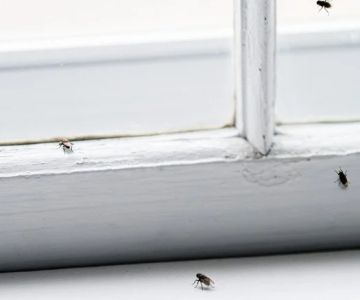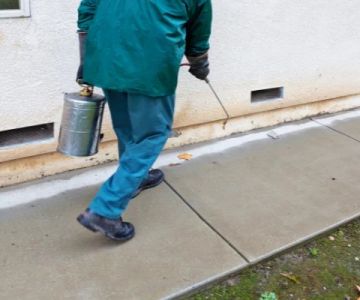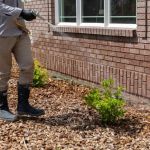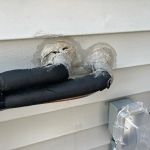
How to Seal Entry Points in Foundation Cracks
- 1. Understanding Foundation Cracks
- 2. Why Sealing Foundation Cracks is Important
- 3. Tools and Materials Needed to Seal Foundation Cracks
- 4. Step-by-Step Guide to Sealing Foundation Cracks
- 5. Additional Tips for Preventing Future Foundation Cracks
1. Understanding Foundation Cracks
Foundation cracks are a common issue in many homes, caused by a variety of factors such as soil movement, water pressure, or temperature fluctuations. These cracks can be small and superficial or large and structural, depending on the severity of the underlying cause. It’s crucial to properly identify the type of crack and its source to determine the best course of action for repair.
The most common types of foundation cracks include vertical, horizontal, and stair-step cracks. Each of these types can be indicative of different issues, such as settling or shifting of the foundation, or water pressure against the foundation walls. Understanding the type of crack is important for effective sealing and repair.

Central Exterminating Company
3202 St Clair Ave NE, Cleveland, OH 44114, USA
2. Why Sealing Foundation Cracks is Important
Sealing cracks in the foundation is essential for several reasons. First and foremost, it prevents water from infiltrating the foundation, which can lead to serious water damage, mold growth, and further structural issues. Over time, if left untreated, cracks can worsen, leading to more expensive repairs and potentially dangerous consequences for the integrity of your home.
In addition to preventing water damage, sealing foundation cracks also helps improve energy efficiency by reducing drafts and preventing the loss of conditioned air. A well-sealed foundation can also help to stabilize the structure and prevent further movement caused by moisture penetration or soil shifting.
3. Tools and Materials Needed to Seal Foundation Cracks
Before you begin sealing foundation cracks, make sure you have the right tools and materials on hand. Here’s a list of what you’ll need:
- Concrete crack filler or epoxy sealant
- Caulking gun (if using a caulk-based sealant)
- Wire brush or scraper
- Utility knife
- Paintbrush (optional, for smoothing the sealant)
- Gloves and safety glasses for protection
- Drop cloths or plastic sheets to protect surrounding surfaces
When choosing a sealant, ensure that it is appropriate for the type of crack you are sealing. Epoxy-based sealants are ideal for larger cracks or structural issues, while polyurethane or silicone-based caulks work well for smaller, non-structural cracks.
4. Step-by-Step Guide to Sealing Foundation Cracks
Sealing foundation cracks is a relatively simple DIY task that you can perform with a little patience and the right materials. Follow these steps to ensure a successful repair:
Step 1: Clean the Crack
Begin by cleaning the crack thoroughly. Use a wire brush or scraper to remove any debris, dirt, or loose concrete from the crack. This will ensure that the sealant adheres properly to the surface. If necessary, wash the area with water and allow it to dry completely before proceeding.
Step 2: Apply the Sealant
Apply the chosen sealant to the crack using a caulking gun or a putty knife, depending on the type of product you are using. For epoxy or concrete fillers, you may need to mix the two components before application. Carefully fill the crack, ensuring that the sealant reaches the full depth of the crack.
Smooth the surface of the sealant with a paintbrush or putty knife to ensure a clean finish and prevent any excess material from spilling over onto the surrounding area.
Step 3: Allow Drying Time
Allow the sealant to dry completely before exposing it to moisture or heavy contact. Drying times vary depending on the product you use, but it typically takes anywhere from a few hours to 24 hours for the sealant to fully cure. Check the manufacturer’s instructions for specific drying times.
Step 4: Inspect and Maintain
After the sealant has dried, inspect the area to ensure the crack is fully sealed. If necessary, apply a second coat of sealant to ensure a strong bond. Regularly check the sealed area over time to ensure it remains intact and free from further cracks or damage.
5. Additional Tips for Preventing Future Foundation Cracks
In addition to sealing existing cracks, there are steps you can take to prevent future foundation issues:
- Maintain proper drainage: Ensure that water flows away from the foundation by maintaining the slope of the land around your home and cleaning gutters regularly.
- Control moisture levels: Use a dehumidifier in areas of the home where moisture is high and fix any plumbing leaks immediately.
- Inspect the foundation regularly: Conduct seasonal inspections of your foundation to catch any cracks early before they turn into larger issues.
By taking these precautions, you can minimize the chances of future cracks forming and maintain the integrity of your home’s foundation.
Sealing cracks in your foundation is a straightforward but essential task that helps protect your home from water damage and structural issues. Whether you’re addressing minor cracks or larger gaps, taking action early can save you time and money in the long run.
For more tips on home maintenance or to find reliable professionals for larger foundation repairs, visit 【PestControlHub】 to find the right products and services for your needs.








 Spider Assassin and Pest Management4.0 (91 reviews)
Spider Assassin and Pest Management4.0 (91 reviews) Ecotect Pest Elimination4.0 (257 reviews)
Ecotect Pest Elimination4.0 (257 reviews) Green Pest Management5.0 (40 reviews)
Green Pest Management5.0 (40 reviews) Strive Pest Control4.0 (11 reviews)
Strive Pest Control4.0 (11 reviews) M&H Pest Control Detroit4.0 (53 reviews)
M&H Pest Control Detroit4.0 (53 reviews) Accelerated Mitigation5.0 (1 reviews)
Accelerated Mitigation5.0 (1 reviews) How to Seal Gaps at Door Bottoms to Block Insects – Easy Methods for Effective Pest Control
How to Seal Gaps at Door Bottoms to Block Insects – Easy Methods for Effective Pest Control How to Recognize Pest Eggs and Larvae Before It’s Too Late
How to Recognize Pest Eggs and Larvae Before It’s Too Late How to Use Granular Treatments Around Foundations for Effective Pest Control
How to Use Granular Treatments Around Foundations for Effective Pest Control How to Prevent Pest Spread via Firewood: Essential Tips for Protecting Your Home
How to Prevent Pest Spread via Firewood: Essential Tips for Protecting Your Home How to Choose Between Bait and Spray for Ants: Effective Solutions for Your Home
How to Choose Between Bait and Spray for Ants: Effective Solutions for Your Home How to Seal Entry Points Around Piping: Effective Methods for Home Protection
How to Seal Entry Points Around Piping: Effective Methods for Home Protection